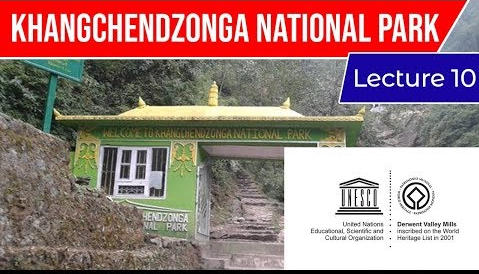Table of Contents
INDIA

Khangchendzonga National Park
- Located at the heart of the Himalayan range in northern India (State of Sikkim), the Khangchendzonga National Park includes a unique diversity of plains, valleys, lakes, glaciers and spectacular, snow-capped mountains covered with ancient forests, including the world’s third highest peak, Mount Khangchendzonga.
- Mythological stories are associated with this mountain and with a great number of natural elements (caves, rivers, lakes, etc.) that are the object of worship by the indigenous people of Sikkim.
FACTS
- It was inscribed to the UNESCO World Heritage Sites list in July 2016, becoming the first “Mixed Heritage” site of India.
- It was recently included in the UNESCO Man and the Biosphere Programme. The park gets its name from the mountain Kangchenjunga which is 8,586 metres (28,169 ft) tall, the third-highest peak in the world. The total area of this park is 849.5 km2 (328.0 sq mi).
- The park contains Tholung Monastery, a gompa located in the park’s buffer zone
FACTS
- This is for the first time that any Indian destination has been under the Mixed criteria of UNESCO’s heritage sites list, thus recognising the outstanding universal values for its both natural and cultural significance.
- The UNESCO designation not only adds prestige to the park, but also entitles it to financing from the World Heritage Fund.
- This is important since tourist arrivals to our state more than doubled to 38,479 in 2015 and our target is around 12 lakh visitors by 2025.
FACTS
- The park has 18 sub-forest types. It has a large diversity of species of higher plants (1,580), mammals (124) and birds (300).
- The park is home to the red panda, snow leopard, great Tibetan sheep and musk deer. The birds include blacknecked crane, grey peacock pheasant, Himalayan monal pheasant, Sikkim’s state bird blood pheasant, Tibetan snow cock and Himalayan snow cock.
- What is also unique about its eco-system is that it has permanently snowcapped mountains, glaciers, high altitude lakes, grasslands, cold deserts and varied forest types.
FACTS
- Most of the trekking routes starts from Yuksom (145 km (90 mi) from Gangtok) in West Sikkim. Necessary Permit can be obtained from the Wildlife Education and Interpretation center at Yuksom or from the check post. The popular trek routes are:
- Yuksom – Tshoka – Dzongri
- Bakim – Dzongri – Thangshing – Samuteng – Goechala
- Dzongri Base Camp – Rathong – Khangerteng
- Thangshing – Lam Pokhari – Kasturi Orar – Labdang – Tashiding

























 WhatsApp
WhatsApp